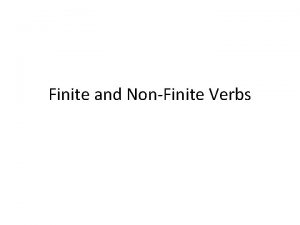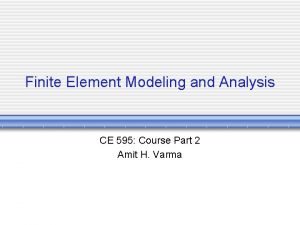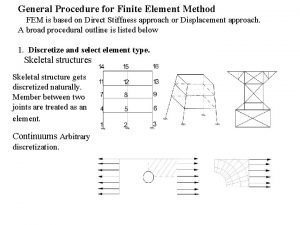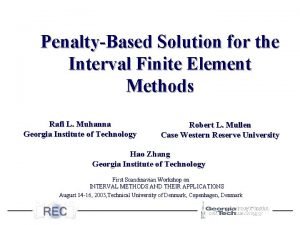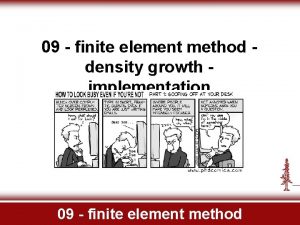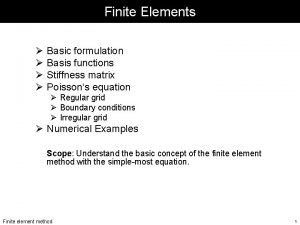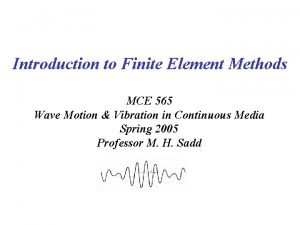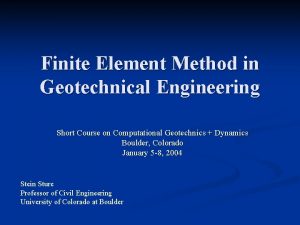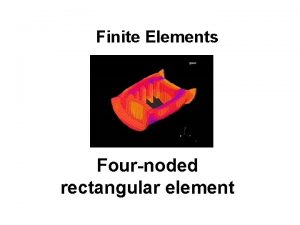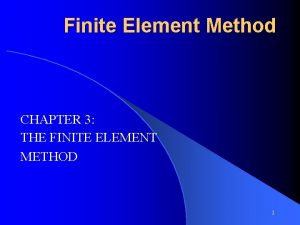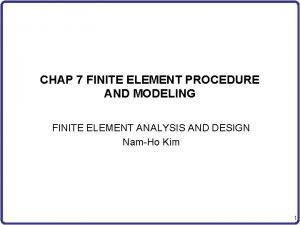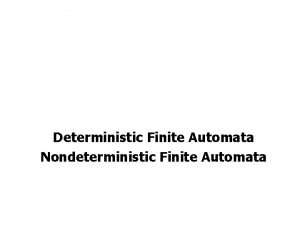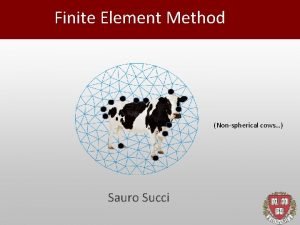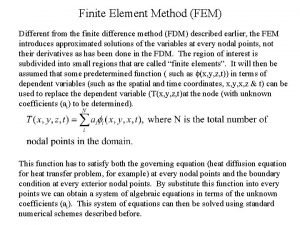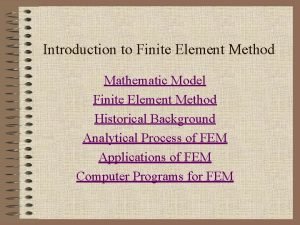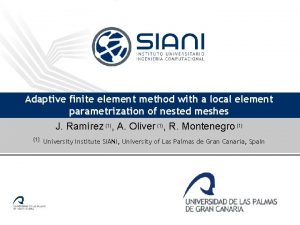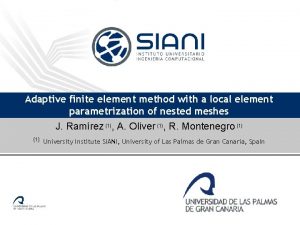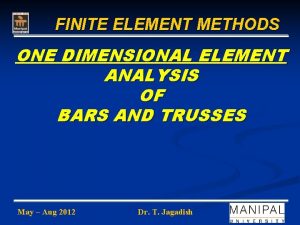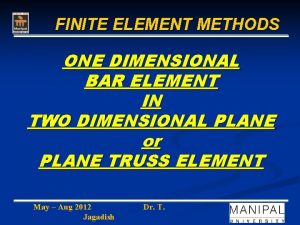Finite Element Modeling of a 5 56 mm


















- Slides: 18

Finite Element Modeling of a 5. 56 mm Brass Cartridge Joseph South & Larry Burton U. S. Army Research Laboratory Composites and Lightweight Structures Branch

Outline • Overview • Cartridge Challenges • Brass Cartridge FEA Modeling – Model Generation – Mechanical Results • Polymer Cartridge FEA Modeling

Overview • Goal – Development of a baseline thermo-mechanical model for a 5. 56 mm cartridge inside a M 16 A 2 barrel. • Approach – Creation and validation of a model for the M 855 brass cartridge. – Utilize FEA to assess the feasibility of lightweight polymers in cartridge case applications. • Technical Barriers – Material functionality is required over the full spectrum of environmental conditions. – Strength required to meet all operational functions • propellant gas pressure, primer strike, feed, extraction

Polymer Cartridge Payoff • Polymers have the potential – to reduce the manufacturing cost • By reducing the number of steps through injection molding – reduce logistical load – improve accuracy • Injection mold the bullet in place • Maintain the centerline alignment Current Basic Issue 7 Magazines M 855 Equivalent Weight 10 Magazines with Polymer Case Cartridges

Lightweight Cartridge Challenge • Brass • Polymer – E ~ 16 Msi – E ~ 0. 2 - 1. 3 Msi – Tm - 1700°F – Tg - 320°F – Moisture insensitive – Hygroscopic

Brass Cartridge Characteristics Current brass systems require numerous manufacturing steps to produce the final microstructure and hardness gradient Hardness and microstructure gradient required to accurately model M 855 response

Brass Cartridge Model • 2 D Static Model – Models a 5. 56 mm brass cartridge in a M 16 A 2 barrel with barrel extension. – Incorporates the effect of the hardness gradient along the cartridge length. – Material models include plasticity. – Primer is assumed have the same structural characteristics as the cartridge. – Contact pair between the cartridge and chamber wall and the cartridge and primer. – Pressure gradient is applied to the inside of the cartridge. – Thermo-mechanical model. M 855 Pressure Profile

Brass Cartridge Modeling

Brass Cartridge Model • Applied Boundary Conditions – Axisymmetric along y axis – Symmetric BC on primer wall along the axis. – Zero displacement BC in all directions applied to the head of the cartridge. • Assumes continuous intimate contact between the bolt and the cartridge. • Does not account for rearward motion during firing. – Zero displacement BC in all directions applied to the barrel extension. – Total of 31, 000 elements.

Thermal FEA Modeling • 2 D Axisymmetric Sequential Model • Meshed with 8 node thermal elements – ID contains surface effect element – 6000 elements • Calculated from interior ballistics • Thermal loads are applied in a tabular format to the ID

Brass Cartridge FEA Results Failure Criteria sult tensile = 120 ksi sult comp = 100 ksi eult = 0. 45

Brass Cartridge FEA Results

Brass Model Summary • Goal has been to benchmark the M 855 brass cartridge with a FEA model. • The current model incorporates the strength changes in the cartridge due to the variations in the hardness and microstructure. • The model yields a stress state within the brass that demonstrates 2. 0 ultimate factor of safety. • Measurements from expended cartridges show good correlation with the predicted plastic deformation.

Polymer Cartridge Model • 2 D Axisymmetric Model – Cartridge is entirely polymer – Nylon 612 – Internal pressure is loaded in smaller increments

Polymer Cartridge FEA Results Subjected to an Internal Pressure of 5 ksi Failure Criteria Nylon 612 sult tensile = 7 ksi eult tensile = 0. 4

Polymer Cartridge FEA Results Displacement Vector Plot

Polymer Model Summary • The polymer cartridge model is currently a work in progress. • Due to the mechanical properties of the polymer, modifications to the case design will be required. • Investigations continue into optimizing the model including – Parametric assessment of increased wall thickness on survivability of polymer cartridge – The effect of the cartridge head design on the survivability of the polymer cartridge. – Alternate materials • Different polymer systems or filled composite systems

Conclusions &Future Direction • The FEA modeling of the brass M 855 cartridge provides a solid foundation to evaluate alternative cartridge materials. • Future efforts will focus on – Applying thermal capability to determine in-bore heating profile. • Allows for investigation of cook-off and thermal softening. – Use existing model to examine stress state due to • Primer strike, extraction and feed.
 What is finite verb
What is finite verb Learning objectives for finite and non finite verbs
Learning objectives for finite and non finite verbs Finite and nonfinite verbs examples
Finite and nonfinite verbs examples Finite and non finite subordinate clauses
Finite and non finite subordinate clauses Non finite forms of the verb qayda
Non finite forms of the verb qayda Modeling and role modeling theory
Modeling and role modeling theory Relational modeling vs dimensional modeling
Relational modeling vs dimensional modeling Hourglass modes finite element method
Hourglass modes finite element method Finite element methods
Finite element methods Finite element
Finite element Finite element method
Finite element method Cst elements
Cst elements Finite element method
Finite element method Finite element analysis
Finite element analysis Finite element method
Finite element method Truss finite element analysis
Truss finite element analysis Finite element method in geotechnical engineering
Finite element method in geotechnical engineering Introduction to fem
Introduction to fem Finite element method example
Finite element method example


